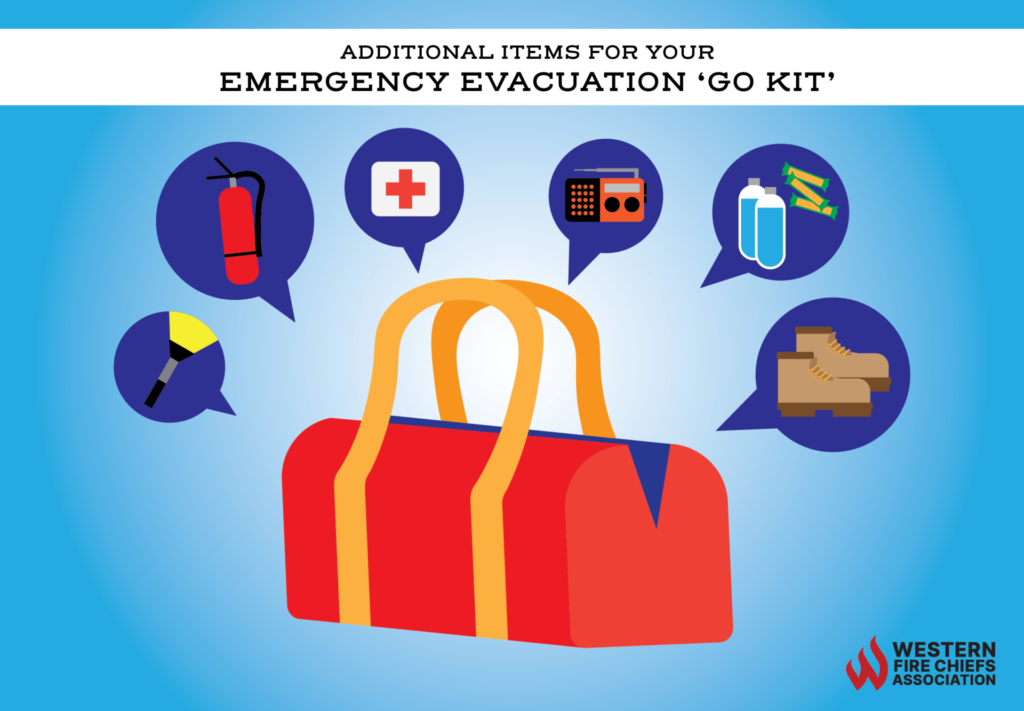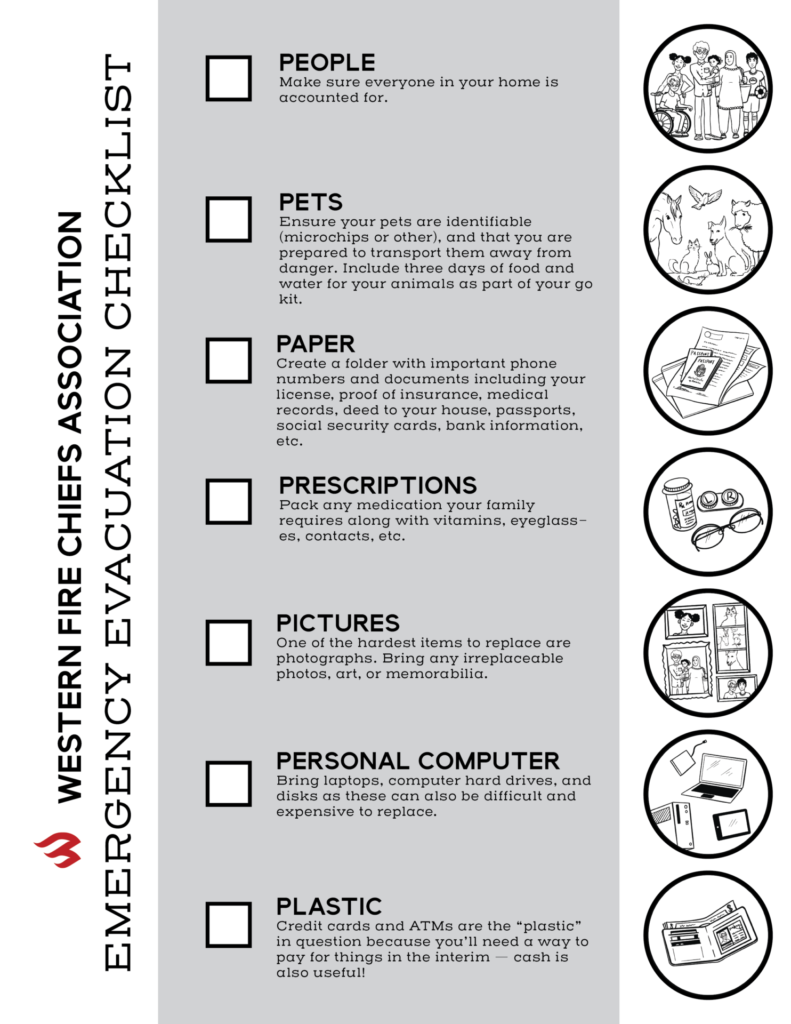Fire Pit Safety Tips
Stay safe around the campfire with tips from the Western Fire Chiefs Association. Learn essential precautions and practices for a worry-free outdoor campfire.
Be prepared and learn how to create your wildfire evacuation plan and checklist with guidance and resources from the Western Fire Chiefs Association (WFCA).
Published:September 13, 2022
Edited:April 24, 2024
Be prepared and learn how to create your wildfire evacuation plan and checklist with guidance and resources from the Western Fire Chiefs Association (WFCA).

The months of June, July, and August are peak wildfire season in the United States.1 However, climate change is causing snow to melt earlier in the spring and rain to come later in the fall, leading to an extended period of high temperatures and dry weather. Longer dry seasons make fire an even greater risk.
If you live in one of the following fire-prone states, it is highly recommended that you create a wildfire evacuation plan and checklist:
Wildfires can burn rapidly at short notice. Your safety may depend on wildfire preparedness — having the proper knowledge about wildfires and understanding the different evacuation levels in case you must leave your home soon after a fire begins.
Below is a brief explanation of the three levels of evacuation. Knowing the actions associated with each level can help you make the best decisions for yourself and your family in the event of a wildfire.
Stay alert by following news updates on the internet, TV, or radio. There is a wildfire threat, and it could escalate. Have your wildfire evacuation kit ready to go.
A substantial threat is nearby. Keep monitoring local news and be prepared to leave your home at any moment. The conditions during Level 2 are unpredictable, and you may not get a warning if the situation intensifies rapidly. If you feel unsafe, do not hesitate to evacuate.
At Level 3, there is active and extreme danger in your area. Put your wildfire evacuation plan into action immediately.
You can read more in-depth information about the levels of evacuation in Wildfire Evacuation Levels Explained.
Below are the steps necessary to create a thorough and well-informed evacuation plan in case of an emergency.
Determine a meeting location outside of the hazard area whenever there is a wildfire. This allows you to quickly determine who has been safely evacuated.
Due to the wildfire itself, traffic, or road closures, you may need to use different escape routes when evacuating. Make sure you consider all options when creating an evacuation plan and include possible escape routes as a part of your wildfire evacuation kit.
Evacuation is often chaotic. You must create a plan for pets or large animals like horses and other livestock. If at all possible, you should bring pets or livestock with you. Remember, if it is not safe for you to stay, then it is not safe for your animals either.
If you have exhausted all efforts to bring your animals, you should leave them in a pasture with the most distance between them and the fire. They should have enough hay and water for 48 to 72 hours. Do not leave them in a barn or holding pen.3
When your family is involved in a natural disaster like a wildfire, it can be difficult to stay in contact. You may get separated or experience a loss of cell service. For this reason, you should designate a point of contact. This point of contact is an out-of-area friend or relative that is a single source of communication among all family members in case separation occurs.
What will you need to have on hand if a wildfire occurs? What should you bring with you if you need to evacuate?
The worst time to decide this is during Level 1 or Level 2 of a wildfire in your area. Continue to the next section to start building your kit.
Part of having a wildfire evacuation plan is having an emergency kit you can take with you at a moment’s notice. Here is what it should contain:
The Seven “P’s”4

Here are some additional items you’ll want to add to your stash:
When you’ve hit Level 3 (or you no longer feel safe at Level 2), you should follow these steps to prevent property damage.
If you are looking for additional resources for your wildfire evacuation plan, visit the sites below.
Stay safe around the campfire with tips from the Western Fire Chiefs Association. Learn essential precautions and practices for a worry-free outdoor campfire.
Discover essential firework safety tips to ensure a dazzling display without accidents. Learn how to celebrate responsibly with expert guidance from WFCA.
Explore the role of AI in wildfire prediction with guidance from the WFCA. Learn how advanced algorithms and data analytics enhance early detection and response.